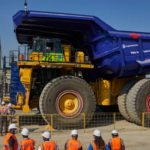Crosstown Commercial / December 21, 2020
Workforce Housing: Understanding a Key Slot in the Multifamily Dwelling Industry
Though essential workers have always been critical to our country’s success and our economy, one thing is for sure – essential workers are now more critical than ever. When it comes to COVID-19, we can safely assume that our essential workers include all workers in health care, all members of law enforcement, child care workers and teachers, water and wastewater workers, agriculture and food production workers, transportation workers, and those in critical trades such as grocery, hardware, mechanics, construction, electrical, and plumbing.
Though gratitude for these workers was freely flowing when COVID-19 reared its ugly head, that shared love has mostly diminished. It’s not that folks are no longer thankful. It merely means that we are all getting used to this new way of normal. But, the fact is, we can’t get by without these workers.
And since these essential workers are, well, essential, it can be a bit hard to muster that many areas haven’t embraced increasing the amount of available workforce housing. Sure, the concept of workforce housing isn’t a sexy one. But the truth remains – workforce housing is needed wherever there are essential workers. Commercial real estate companies that we once thought were resilient are now showing their vulnerability to large-scale disruptions coming from coronavirus.
Who is Workforce Housing Really For?
Traditionally, workforce housing was intended for households bringing in the area median income (AMI). But workforce housing is intended as affordable, mid-quality housing for the workers in that community. And essential workers are often a target audience for this type of residence – they need a home destination that is close by, affordable, and safe.
Unfortunately, not all neighborhoods are designed to accommodate those in this AMI bracket. And as a result, many essential workers cannot find suitable housing close to their work areas.
Why are Communities Resistant to Workforce Housing?
It’s important first to understand that workforce housing is not the same as low-income housing. However, the challenge is differentiating what is considered low income, as many essential workers make relatively low wages compared to the population at large. For example, home health aides, school bus drivers, daycare workers, farmers, and cashiers often make minimum wage, which could be considered low income. However, these non-disabled workers are also considered essential workers and are critical to our country’s success.
This all said some factors contribute to why various communities do not wish to pursue more workforce housing.
- The overlap between low-income housing and the accepted definition of workforce housing
- Concerns that an increase in workforce housing will mean that developers will latch on to Class B and Class B buildings, making only necessary improvements
- Moving people with lower incomes into the area could increase the perceived risk that property values will lower as a result
- Allotting additional units for medium-income dwellings will, in turn, reduce the profits that they could obtain from a multifamily dwelling investment
The harsh reality is that multifamily developers lean towards units where there will be higher rent, which translates to a better investment.
Workforce Housing is a Clear Prospect in the Multifamily Dwelling Industry
As essential workers are some of the few classifications of workers not walloped with job loss during the pandemic, workforce housing can, in many cases, be considered recession-proof. As such, many practical investors understand that the demand for more traditional multifamily residences is lapsing.
There has been investment across the country by savvy investors recognizing the need for workforce housing. Cities such as Atlanta have seen a significant increase in affordable and workforce housing developments.
The Future of Workforce Housing
As the United States population continues to grow, demand for housing that caters to those with median incomes will increase along with it. Multifamily developers will be able to tap into tax credits and incentives from local improvement districts. As such, it seems that workforce housing will remain resilient to the ongoing pandemic and the resulting stock market fluctuations that we have seen as a result.



























